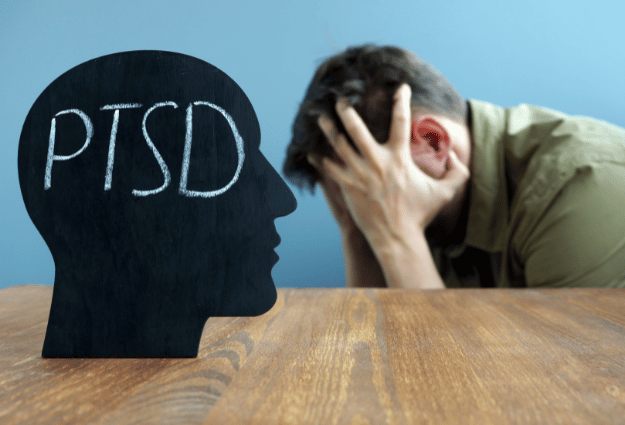Complex PTSD vs PTSD: Key Differences, Symptoms, and Treatment Approaches
Post-traumatic stress disorder (PTSD) and complex post-traumatic stress disorder (C-PTSD) are trauma-related conditions that significantly impact mental health and daily functioning. While they share core symptoms, they also have important distinctions that affect diagnosis and treatment approaches. Understanding these differences is crucial for those seeking help for trauma-related symptoms.
At Revive Counseling in Spokane, we’ve helped many individuals navigate the challenges of both PTSD and C-PTSD. This comprehensive guide will explain the key differences between these conditions and outline effective treatment options available for each.
TLDR: Key Takeaways About Complex PTSD vs PTSD
- PTSD typically results from single-incident trauma, while Complex PTSD develops from prolonged, repeated trauma, often during childhood or in situations where escape was difficult.
- Both conditions share core symptoms of flashbacks, avoidance, negative thoughts, and hyperarousal, but C-PTSD includes additional difficulties with emotional regulation, self-perception, and relationships.
- Diagnosis requires comprehensive assessment by mental health professionals using standardized criteria and assessment tools.
- Evidence-based treatments exist for both conditions, with C-PTSD often requiring longer, phase-based approaches addressing the broader impacts of complex trauma.
Ready to Begin Your Healing Journey?
Understanding the difference between PTSD and Complex PTSD is an important first step, but healing requires professional support tailored to your unique experiences and needs. At Revive Counseling in Spokane, our team of trauma specialists offers comprehensive assessment and treatment for both PTSD and C-PTSD.
We provide a safe, supportive environment where you can work through trauma at your own pace, using evidence-based approaches proven to reduce symptoms and improve quality of life. Don’t wait to begin your healing journey—contact us today to schedule a consultation and take the first step toward recovery.
Understanding PTSD and Complex PTSD Fundamentals

What is PTSD?
Post-traumatic stress disorder is a psychiatric condition that can develop after experiencing or witnessing a traumatic event. According to the National Center for PTSD, approximately 6% of the US population will experience PTSD at some point in their lives.
PTSD typically develops from exposure to a single traumatic incident such as:
- Military combat
- Natural disasters
- Car accidents
- Physical or sexual assault
- Life-threatening medical diagnoses
The Diagnostic and Statistical Manual (DSM-5) recognizes PTSD as a condition marked by intrusive memories, avoidance behaviors, negative alterations in mood and cognition, and heightened arousal following trauma exposure.
What is Complex PTSD?
Complex PTSD (C-PTSD) was formally recognized as a separate diagnosis in the World Health Organization’s International Classification of Diseases (ICD-11) in 2018. While not currently listed as a distinct diagnosis in the DSM-5, many mental health professionals in the US recognize its unique presentation.
C-PTSD typically results from prolonged, repeated trauma, particularly when:
- The trauma occurs over an extended period
- Escape from the traumatic situation was difficult or impossible
- The person experienced multiple types of trauma simultaneously
Examples of situations that may lead to C-PTSD include:
- Childhood abuse or neglect
- Domestic violence
- Human trafficking
- Prolonged captivity
- Chronic exposure to war
The Core Symptoms That Differentiate PTSD from C-PTSD
PTSD Symptoms
Both conditions share the core symptoms of PTSD, which include:
- Re-experiencing symptoms: Flashbacks, nightmares, and intrusive memories of the traumatic event
- Avoidance behaviors: Avoiding people, places, thoughts, or feelings that remind one of the trauma
- Negative alterations in cognition and mood: Persistent negative beliefs about oneself or the world, feelings of detachment
- Hyperarousal: Being easily startled, feeling tense, difficulty sleeping, and angry outbursts
Additional C-PTSD Symptoms
What makes complex PTSD distinct is the presence of additional symptoms beyond those of PTSD. According to PTSD UK, these additional symptoms fall into three key categories:
- Emotional Regulation Difficulties:
- Persistent sadness or depressive symptoms
- Explosive anger or persistent irritability
- Emotional numbing or disconnection from feelings
- Suicidal thoughts
- Negative Self-Concept:
- Feelings of worthlessness and shame
- Believing you are fundamentally damaged or different from others
- Persistent feelings of emptiness
- Losing one’s core beliefs about the world
- Relationship Disturbances:
- Difficulty maintaining healthy relationships
- Problems with trust and intimacy
- Tendency to develop unhealthy relationships that replicate past trauma
- Persistent feelings of disconnection from others
The Cleveland Clinic notes that these additional symptoms reflect how prolonged trauma, particularly during developmental periods, can fundamentally alter a person’s sense of self and ability to relate to others.
Causes and Risk Factors: What Leads to Complex PTSD vs PTSD

The key difference between the causes of PTSD and C-PTSD lies in the nature, duration, and context of the traumatic exposure.
PTSD Causes
PTSD typically develops after exposure to:
- A single traumatic event
- A time-limited traumatic experience
- A situation where the person had some degree of control or escape options
- Trauma experienced in adulthood (though children can develop PTSD)
Research suggests that approximately 25-30% of people exposed to traumatic events develop PTSD, with risk factors including:
- Severity of the trauma
- Lack of social support following the trauma
- History of anxiety or depression
- Family history of mental health conditions
C-PTSD Causes
Complex PTSD typically emerges from:
- Prolonged or repeated traumatic experiences
- Trauma occurring over months or years
- Situations where escape was difficult or impossible
- Trauma perpetrated by caregivers or those in positions of trust
- Trauma experienced during childhood or critical developmental periods
The risk of developing C-PTSD increases with factors such as:
- Early age at trauma onset
- Multiple types of trauma exposure (poly-victimization)
- Trauma occurring within attachment relationships
- Lack of protective factors or support during or after trauma
According to the National Center for PTSD, childhood trauma particularly increases the risk for developing the additional symptoms associated with C-PTSD because it occurs during critical periods of brain development and identity formation. Our trauma-informed therapy services are specifically designed to address these complex presentations.
Diagnosis and Assessment: How Mental Health Professionals Identify Each Condition
Diagnosing trauma-related disorders requires comprehensive assessment by qualified mental health professionals.
PTSD Diagnostic Process
In the United States, mental health professionals use the DSM-5 criteria to diagnose PTSD, which requires:
- Exposure to actual or threatened death, serious injury, or sexual violence
- Presence of intrusion symptoms
- Persistent avoidance of stimuli associated with the trauma
- Negative alterations in cognition and mood
- Changes in arousal and reactivity
- Symptoms lasting more than one month
- Significant distress or functional impairment
Common assessment tools include:
- PTSD Checklist for DSM-5 (PCL-5)
- Clinician-Administered PTSD Scale (CAPS-5)
C-PTSD Diagnostic Process
Since C-PTSD is not currently a distinct diagnosis in the DSM-5, mental health professionals in the US often diagnose it as PTSD with additional specified features. However, they may use the ICD-11 criteria, which recognizes C-PTSD as a separate condition requiring:
- All core PTSD symptoms
- Persistent problems with emotional regulation
- Negative self-concept
- Relationship difficulties
The International Trauma Questionnaire (ITQ) has been developed specifically to assess C-PTSD according to ICD-11 criteria.
At Revive Counseling, our mental health services include comprehensive trauma assessments to ensure accurate diagnosis and appropriate treatment planning.
Evidence-Based Treatment Approaches for PTSD and Complex PTSD

Both PTSD and C-PTSD respond to trauma-focused treatments, though approaches may need to be tailored for complex trauma presentations.
Evidence-Based Treatments for PTSD
First-line treatments for PTSD include:
- Trauma-Focused Cognitive Behavioral Therapy (TF-CBT): Helps individuals process traumatic memories and challenge unhelpful thoughts about the trauma. Our CBT therapy services provide structured support for addressing trauma-related thoughts and behaviors.
- Eye Movement Desensitization and Reprocessing (EMDR): A specialized approach that helps the brain process traumatic memories using bilateral stimulation. Research shows EMDR can significantly reduce PTSD symptoms in many individuals. Revive Counseling offers EMDR therapy in Spokane with trained specialists.
- Prolonged Exposure Therapy: Gradually helps individuals face trauma-related memories and situations they’ve been avoiding.
- Medication: Selective serotonin reuptake inhibitors (SSRIs) and other medications may be prescribed to help manage symptoms.
Specialized Approaches for C-PTSD
Treatment for C-PTSD often requires additional components addressing the broader impacts of complex trauma:
- Phase-Based Treatment: Many experts recommend a phase-based approach for C-PTSD:
- Phase 1: Safety, stabilization, and skill-building
- Phase 2: Trauma processing
- Phase 3: Integration and reconnection
- Dialectical Behavior Therapy (DBT): Particularly helpful for emotional regulation difficulties common in C-PTSD. Our DBT therapy services can help individuals develop skills to manage intense emotions.
- Somatic Experiencing: Addresses how trauma is stored in the body and nervous system. Revive Counseling offers somatic experiencing therapy to help release trauma held in the body.
- Internal Family Systems (IFS): Helps address the fragmented sense of self that can result from complex trauma.
- Attachment-Focused Therapies: Address the relational impacts of developmental trauma.
According to the VA National Center for PTSD, while trauma-focused therapies are effective for both conditions, individuals with C-PTSD may require longer treatment duration and additional focus on self-regulation skills before trauma processing begins.
Living With and Healing From PTSD and Complex PTSD
Recovery from trauma-related disorders is possible with appropriate treatment and support. The healing journey typically involves:
Self-Care Strategies
- Establishing routines that promote physical and emotional wellbeing
- Learning and practicing grounding techniques
- Engaging in regular physical activity
- Maintaining healthy sleep patterns
- Building a support network of understanding individuals
Long-Term Recovery Considerations
- Healing is rarely linear—setbacks are normal parts of the process
- Progress often occurs in small, incremental steps
- Different symptoms may resolve at different rates
- Developing post-traumatic growth and resilience is possible
For many, depression treatment may also be an important component of healing, as depression frequently co-occurs with trauma-related disorders.
Frequently Asked Questions
Is Complex PTSD more severe than PTSD?
Complex PTSD is not necessarily more severe but is more pervasive in its impact. While both conditions cause significant distress, C-PTSD affects core aspects of identity, emotional regulation, and relational functioning in addition to causing the classic PTSD symptoms.
Can you have both PTSD and Complex PTSD?
Since Complex PTSD includes all the symptoms of PTSD plus additional symptoms, you would typically be diagnosed with C-PTSD rather than both conditions simultaneously. However, someone might initially be diagnosed with PTSD before the full extent of their symptoms is recognized.
Are borderline personality disorder and C-PTSD the same thing?
No, though they share some overlapping symptoms. Borderline personality disorder (BPD) involves instability in moods, behavior, self-image, and functioning. While C-PTSD shares features like emotional dysregulation and relationship difficulties, it specifically requires a history of prolonged trauma and includes PTSD symptoms like flashbacks and nightmares.
Does Complex PTSD ever go away?
With proper treatment, many individuals experience significant improvement in C-PTSD symptoms. Complete symptom resolution is possible for some people, while others may find their symptoms become manageable enough to lead fulfilling lives. Mental health professionals can help develop personalized treatment plans for long-term recovery.
What happens if Complex PTSD is left untreated?
Untreated C-PTSD can lead to:
- Chronic depression and anxiety
- Substance use disorders
- Physical health problems
- Difficulty maintaining employment and relationships
- Increased risk of suicide
Seeking treatment is crucial for preventing these long-term consequences.
What is the most effective therapy for Complex PTSD?
Research suggests that phase-based approaches combining stabilization, trauma processing, and reintegration are most effective for C-PTSD. Specific therapies like EMDR, DBT, and trauma-focused CBT, when adapted for complex trauma, show promising results. Our trauma-informed therapy services utilize these evidence-based approaches.

